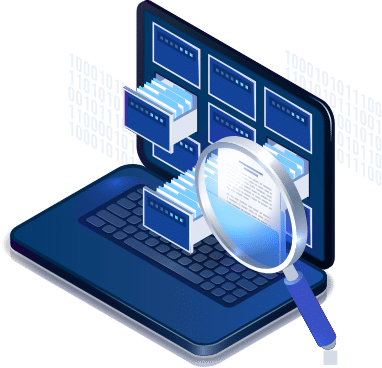In 2024, National Public Data, a prominent background check and fraud prevention service, made headlines for all the wrong reasons. Over 2.7 billion records containing sensitive details of nearly 170 million individuals were exposed in a massive data breach. This wasn’t just a cybersecurity failure but also a collapse in data management fundamentals.
Poor data management creates blind spots that can lead to inaccurate conclusions, missed threats, and costly compliance failures. Security leaders overseeing investigations cannot afford such lapses, as they expose organizations to undue risks and undermine the integrity of investigations.
The good news? These risks are preventable!
So, how can your organization avoid such catastrophic missteps?
The answer lies in two essential processes: data profiling and data cleansing.
Understanding Data Profiling and Cleansing
Data profiling and data cleansing are foundational processes for creating complete, accurate, and secure datasets and ensuring the integrity of investigations. However, they serve different purposes in data management lifecycle. So, let’s quickly take a look to develop a clear understanding.
Data Profiling: The Foundation of Accurate Investigations
Data profiling is the process of systematically analyzing data to uncover anomalies, inconsistencies, and missing values. It involves examining the structure, content, and relationships within a dataset to identify potential quality issues before they become larger problems. This can range from identifying outliers in financial records to spotting duplicate entries in investigative case files.
For example, in security investigations, data profiling can be used to detect patterns that indicate unauthorized access, fraud, or other suspicious activity. By providing insights into the completeness and integrity of data, profiling helps decision-makers uncover hidden risks and ensures that the information used in investigations is reliable and comprehensive.
Want to see how data profiling is done? Here’s a video we made using our very own data profiling tool:
Data profiling helps identify the cracks in your data foundation, but profiling alone isn’t enough. To fully secure your information, these cracks must be repaired through data cleansing, ensuring only clean, accurate data drives your investigations.
Data Cleansing: Eliminating Noise to Focus on Real Threat
Data cleansing involves removing or correcting inaccurate, incomplete, or redundant data. In investigations, it ensures that only the most relevant, accurate, and up-to-date information is used, and thus, minimizes the chances of drawing incorrect conclusions from flawed data.
Data Cleansing can prevent errors that could compromise the results of an investigation, such as duplicate case entries or outdated contact information for key witnesses. More importantly, it reduces the overall risk surface by eliminating unnecessary or outdated data, which can become a target for cybercriminals if left unaddressed.
Together, data profiling and cleansing form a robust framework for managing data in security and investigations. They ensure that data is not only accurate but also secure, thereby, enabling leadership to make confident, data-driven decisions.

The Risks of Poor Data Management in Investigations
Investigations, particularly in the worlds of information security and fraud detection, rely heavily on data – lots of it. However, the data most (if not all) organizations collect is often messy – riddled with duplicates, inaccuracies, inconsistencies, and gaps. When the quality and integrity of data – or the overall data management – falls short, it not only slows down investigations, but the consequences can be severe and far-reaching. Moreover, this issue is far more widespread than many realize.
According to the Salesforce’s State of the IT Report – 3rd Edition, security threats and data integrity and quality issues are the top two IT challenges businesses face.
For investigative teams, poor data management can lead to false leads, missed red flags, and most critically, compliance failures. Understanding these risks is crucial for those working in security and investigation departments in order to prioritize data quality and management initiatives effectively. Failure to do so can lead to:
False Leads
False leads occur when data inaccuracies direct investigators toward non-existent issues or irrelevant areas. These misleading trails can consume valuable time and resources and divert attention away from genuine threats.
For example, wrong contact information or incorrect timestamps can lead investigators down unproductive paths and delay the resolution of critical security incidents.
Inaccurate Conclusions
Poor data quality can lead to erroneous findings and undermine the credibility of investigations. Inconsistent or incomplete data may result in false positives or negatives. As a result, investigators may chase non-existent threats or overlook genuine issues.
For instance, duplicate entries or outdated information can skew analysis, which then can lead to flawed decisions and misguided strategies in investigation processes. Not to forget the wasted resources.
Missed Red Flags and Threats
Red flags are early indicators of potential security breaches or fraudulent activities. Poor data quality and management strategies can result in these warning signs being overlooked or misinterpreted and allow threats to escalate unnoticed.
Poor quality data, inadequate security protocols, and lack of (efficient) monitoring can also obscure patterns indicative of malicious activities, like unauthorized access attempts.
The September 2018 Hotel Marriot International breach, where unauthorized access to the network remained undetected for years, exemplifies how missed red flags can lead to significant security failures.
For context (in case you are not aware), the breach compromised the data of 500 million Starwood guests.
Without an accurate dataset and a comprehensive data management strategy, it becomes significantly more challenging to identify and respond to security threats, which leaves organizations more vulnerable to attacks.
Costly Compliance Failures
Regulatory compliance is a top priority for organizations handling sensitive data. Poor data management increases the risk of non-compliance, which can result in hefty fines and legal repercussions.
Meta faced a €265 million ($275 million) penalty from Ireland’s Data Protection Commission for breaching data protection regulations, which resulted in user data being exposed on a hacking forum.
While Meta (being the social media giant it is) survived the impact of the breach and regulatory violation, not all organizations can. Beyond financial penalties, such compliance failures can significantly damage the organization’s reputation and also erode stakeholder trust in them.
Operational Inefficiencies
Effective investigations require seamless data access and processing. When data is fragmented, inconsistent, or poorly managed, it hampers the ability of security professionals or those dealing with data to conduct thorough and timely analyses. This can delay decision-making, prolong investigations, and ultimately impact the organization’s ability to identify and respond swiftly to security incidents.
Reputational Damage
Data breaches or flawed investigations resulting from poor data quality can severely damage an organization’s reputation.
Clients and stakeholders expect robust data management practices to safeguard sensitive information and ensure accurate investigative outcomes. Failure to meet these expectations can result in loss of business, diminished market standing, and long-term reputational harm.
Increased Financial Risks
Beyond compliance fines, poor data management can lead to other financial risks. Ineffective investigations may fail to prevent fraud, resulting in direct financial losses. Additionally, the costs associated with rectifying data quality issues—such as data cleansing efforts, system upgrades, and retraining staff—can be substantial. These financial burdens can strain organizational resources and divert funds from strategic initiatives.
Strategic Missteps
High-level decisions rely on accurate and comprehensive data. When data quality is compromised, strategic planning and risk assessment can be based on faulty premises and lead to misguided business strategies. This misalignment can
hinder the organization’s ability to achieve its objectives, adapt to market changes, and maintain a competitive edge.
How Can Data Profiling and Cleansing Help Reduce Investigation Risks?

The stakes are incredibly high in the information security sector. Every day, organizations face a barrage of threat, from cyberattacks to data breaches, which can have serious financial, legal, and reputational consequences. Therefore, to safeguard their organizations against these risks, it’s essential for investigative teams to ensure that their data management practices, particularly data profiling and cleansing, are tightly integrated into the security framework.
These data preparation processes can help reduce investigation risks by:
1. Enhancing Data Accuracy to Prevent False Positives and Misdirected Investigations
Investigations often require combing through large volumes of data, searching for anomalies or suspicious activity and uncover key facts, patterns, and evidence.
However, dirty data – characterized by duplicates, inconsistencies, or inaccuracies—undermines this entire process and creates a higher risk of false positives. This cannot only misdirect investigations (by end investigators down the wrong path) but also consumes critical resources and delays the identification of actual threats.
Data profiling identifies inaccuracies in datasets, such as incomplete records, misentered values (data entry errors), or outdated information, providing a clear picture of what needs to be corrected. It enables investigators to gain a comprehensive understanding of the data landscape and ensures that the information used is accurate and reliable. For example, profiling can highlight discrepancies in case files and reveal patterns of unusual activity in large datasets, such as conflicting witness statements, unauthorized access attempts, or incomplete records, allowing investigators to address these issues proactively before they impact the investigation’s outcome.
Once issues are identified through profiling, data cleansing then resolves these issues to ensure the integrity of the data being analyzed. This reduces the likelihood of errors that could lead to false conclusions or overlooked evidence. Clean data provides a solid foundation for making informed decisions and drawing accurate insights during investigations.
Data profiling and cleansing reduces the likelihood of false alarms, allows investigators to concentrate on legitimate risks, and mitigate the potential for serious security lapses.
2. Identifying Data Gaps to Ensure Comprehensive Investigations
One of the biggest risks in any investigation is missing data – the unseen blind spots that can compromise case resolution. Whether it’s missing transaction records, incomplete customer information, or absent security logs, these gaps hinder the ability to form a complete picture of events. Data profiling identifies where these gaps exist, while data cleansing ensures that such missing or incomplete data is addressed, either by enriching datasets or flagging critical areas for further investigation.
The proactive identification of missing entries or gaps through profiling can lead investigators to request additional data sources to help connect the dots, while data cleansing reduces the risk of critical evidence being overlooked.
3. Ensuring Compliance with Regulatory Requirements
In industries where compliance with regulations such as the GDPR, CCPA, HIPAA or other data protection laws is vital, the risks of data mismanagement extend beyond investigative delays. Inaccurate or incomplete data exposes organizations to regulatory breaches, which may result in significant fines, legal repercussions, and reputational damage. Data profiling and cleansing play a crucial role in ensuring that your data handling processes meet regulatory standards by identifying non-compliant records and rectifying them before they become liabilities.
Accurate and reliable data prevents costly compliance failures, minimizes the chances of overlooking significant threats, and ensures that investigations are thorough and credible. This not only safeguards the organization’s financial health by avoiding fines and losses but also protects its reputation by demonstrating a commitment to data integrity and security.
Had Meta had stronger data management and security protocols in place, the 2022 data breach (and resulting fine) might have been avoided.
4. Improving Investigative Integrity and Speed
In fast-moving investigations, especially those related to cybercrime or fraud, speed is essential. Delays caused by inconsistent or inaccurate data can give perpetrators time to cover their tracks, which further complicates the investigative process. By systematically profiling data to assess its integrity and cleansing it to eliminate redundancies or errors, organizations can significantly reduce the time required to arrive at actionable insights, and eventually contain or respond to security incidents more quickly.
5. Minimizing Attack Surface
Every piece of redundant, outdated, or irrelevant data in an organization’s database represents a potential vulnerability. The more unnecessary data you have, the larger your attack surface becomes, giving cybercriminals more opportunities to exploit weaknesses in your data management system. For example, if an organization’s data warehouse contains multiple entries for the same individual or outdated records from years ago, this bloated dataset can be exploited by attackers to access sensitive information.
This is where data profiling and cleansing come into play. Data profiling can help identify patterns and anomalies within the dataset, enabling organizations to pinpoint redundant, irrelevant, or obsolete information.
Cleansing ensures that duplicate, irrelevant, or obsolete records are purged from the system, reducing the overall volume of data that attackers could potentially target. By eliminating this excess, organizations reduce their attack surface, making it harder for malicious actors to find entry points or leverage outdated information.
6. Streamlining Investigations
By identifying data quality issues early, profiling helps streamline investigation workflows. Investigators can focus their efforts on analyzing high-quality data without being bogged down by inconsistencies or irrelevant information. This leads to more efficient use of resources and quicker resolution of cases.
Cleansing eliminates unnecessary data that can clutter investigative databases, making it easier to navigate and search for relevant information. For instance, removing duplicate entries or outdated contact information ensures that investigators can access the necessary details without sifting through irrelevant data, thereby speeding up the investigative process.
7. Improving Decision-Making Confidence
Professionals rely on accurate, timely data to make decisions in the heat of an investigation. Whether it’s deciding on resource allocation, determining the severity of a threat, or advising legal teams, data must be trustworthy. Data profiling provides confidence by exposing areas where data might be unreliable, while data cleansing resolves these issues. The result is a higher level of confidence in the data, leading to more informed, effective decision-making.
Best Practices for Implementing Data Profiling and Cleansing in Investigations

Now that we have identified the risks of poor data management and the benefits of data profiling and cleansing, it’s time to explore the best ways to implement these processes.
Here are some ways known to maximize the impact of these strategic data processes on improving data quality and mitigating investigation risks:
1. Establish Clear Data Governance Policies
Before you dive into data profiling and cleansing, it’s crucial that you implement a robust data governance framework. It ensures that your data management efforts are strategically aligned with organizational objectives as well as compliance requirements, thereby minimizing risks.
Actionable Tips:
- Define Data Ownership: Identify who is responsible for data quality within the organization. This could be a dedicated data governance team or department heads with specific accountability for their data sets.
- Set Standards: Establish clear standards for data quality, including completeness, accuracy, timeliness, and consistency, to ensure uniformity across all data sets.
- Implement Controls: Develop procedures for regular monitoring and maintenance data quality through audits and automated controls.
2. Create a Continuous Monitoring and Cleansing Plan
Investigations are rarely static. They evolve rapidly, and new data influxes can degrade quality over time without continuous oversight. A one-time data profiling and cleansing effort may solve immediate issues, but ongoing monitoring ensures that data integrity is maintained throughout the lifecycle of an investigation. This helps prevent degradation of data that could lead to missed threats or inaccurate conclusions.
In 2021, an exploitation of LinkedIn APIs compromised personal data of 700 million of its users. Although LinkedIn didn’t fully acknowledge the data breach and its impact, several other reliable sources confirmed it.
Investigations revealed that the breach was tied to unauthorized data scraping, where cybercriminals collected user information through automated bots.
This points to ongoing vulnerabilities in data management systems and highlights the need for continuous monitoring. A constant monitoring of API interactions could have identified unusual patterns or inconsistencies, such as spikes in scraping activity or suspicious login attempts, early. This might have allowed LinkedIn’s data security team to mitigate the exploitation attempts by measures like blocking suspicious IP addresses or enforcing stricter access controls before the massive data breach occurred.
Actionable Tip:
- Implement a Continuous Data Quality Management System: Use a system that regularly profiles and cleanses data in real time or at scheduled intervals. This proactive approach catches new inconsistencies, duplications, or inaccuracies before they escalate into larger investigative challenges.
- Conduct Regular Audits: Conduct periodic reviews of your data quality initiatives to assess their effectiveness and make adjustments as needed.
- Establish Feedback Loops: Gather feedback from investigators, analysts, and other stakeholders on the usability and accuracy of the cleansed data to ensure it meets operational needs.
- Perform Metric Tracking: Use key performance indicators (KPIs) such as the number of data quality issues detected and resolved, reduction in investigation time, or improved compliance rates to measure the impact of your profiling and cleansing efforts.
3. Prioritize High-Risk Data
Not all data is equally important. Therefore, once a continuous monitoring plan is in place, it’s crucial to focus efforts on the highest-risk data. Prioritizing the profiling and cleansing of high-risk or high-value data, especially in the security and investigations space, where sensitive information is often involved, ensures that your efforts yield the greatest impact.
Actionable Tips:
Focus on:
- Personally Identifiable Information (PII): Routinely cleanse sensitive data like names, addresses, and Social Security numbers to minimize the risk of exposure.
- Operationally Critical Data: Prioritize data that directly influences decision-making, such as case histories, investigation reports, and intelligence sources. Ensure its accuracy and reliability.
4. Leverage AI and Machine Learning for Advanced Profiling and Cleansing
In security investigations, traditional profiling and cleansing methods often struggle to keep up with the scale and complexity of modern datasets. Artificial Intelligence (AI) and Machine Learning (ML) tools can analyze massive datasets in real-time, identifying hidden or subtle patterns, correlations, and anomalies that human analysts might overlook.
For instance, in fraud detection, these tools can recognize unusual transaction patterns that deviate from normal behavior and thus, alert investigators to potential fraudulent activity. Similarly, in combating money laundering, machine learning models can analyze transaction data to recognize patterns indicative of structuring or layering techniques that criminals use to obfuscate illicit funds.
AI algorithms can also be trained to predict future data quality issues. They can help identify red flags, such as sudden changes in transaction amounts or frequency. This allows organizations to respond swiftly to potential threats, minimize financial and reputational damage, and ensure more proactive data management.
Actionable Tip:
- Data Enrichment: Use AI to enrich data profiles by correlating disparate datasets in order to reveal deeper insights that inform investigative strategies.
- Automate Risk Scoring: Implement ML algorithms that assign risk scores to individuals or transactions based on historical data to streamline the prioritization of investigations.
- Establish Feedback Mechanisms: Establish feedback loops where analysts can provide input on AI findings. This helps continually refine models to enhance accuracy over time.
- Look for Scalability: Choose solutions that can handle the volume and complexity of your data, whether structured or unstructured.
- Ensure Flexibility: Select tools that can be customized to suit your specific data governance policies, allowing you to define the parameters of profiling and cleansing processes.
5. Automate Profiling and Cleansing Processes
Manual data profiling and cleansing can be time-consuming and prone to human error, especially when dealing with large volumes of data from disparate sources. Automating these processes helps to streamline investigations by ensuring consistency and speed, while also freeing up valuable time for analysts and investigators to focus on interpreting results rather than manually handling data.
In December 2021, JP Morgan was fined $200 million for failing to meet record-keeping requirements. Automated profiling and cleansing processes could have potentially prevented the compliance failure that led to the hefty fine by identifying inconsistencies or gaps – such as unrecorded communications or incomplete transaction logs – in JP Morgan’s record-keeping practices before they escalated into regulatory issues.
Automation enables organizations to continuously monitor data quality, ensure compliance requirements are consistently met, and reduce the risk of costly fines.
Actionable Tip:
- Invest in Advanced Tools: Select profiling and cleansing tools that seamlessly integrate with your existing data infrastructure and automatically scan for errors, duplicates, inconsistencies, and missing values, generating real-time reports that inform investigative teams early in the process.
6. Ensure Collaboration Across Departments and Teams
Data profiling and cleansing are not isolated IT tasks – they require close collaboration between various departments, including IT, compliance, legal, risk management, and investigative teams. Each of these groups brings critical insights into the data lifecycle, including where data originates, how it’s processed, and how it’s ultimately used in investigations.
Actionable Tip:
- Establish Cross-Functional Teams: Create teams that include members from IT, compliance, legal, risk management, and investigative units to oversee data quality throughout investigations. This ensures a holistic approach where data integrity is maintained from collection through to analysis, minimizing and minimizes gaps in communication that can lead to critical oversights.
7. Prioritize Data Security and Privacy
While focusing on profiling and cleansing, it is crucial to ensure that data security and privacy protocols are rigorously enforced. Sensitive investigative data often includes personally identifiable information (PII) or confidential records, which must be handled according to regulatory standards.
In 2018, India suffered a massive data breach when the world’s largest database Aadhaar was infiltrated due to absence of access control on a connected utility website. The breach exposed the data of more than 1.1 billion Indian citizens. This incident highlights the necessity of data-level security measures that can help maintain data privacy and prevent unauthorized access.
Actionable Tip:
- Adopt Data-Level Security Frameworks: Implement frameworks such as label security or role-based access controls, to ensure that only authorized personnel can access or modify sensitive data during the profiling and cleansing process. This minimizes the risk of data breaches or unauthorized data alterations.
- Enforce Privacy Standards: Ensure that your data profiling and cleansing activities comply with relevant regulatory standards for safeguarding sensitive information.
8. Use Data Profiling and Cleansing as Part of a Broader Data Governance Strategy
Data profiling and cleansing should not exist in isolation; they should be part of a broader data governance strategy that ensures data quality across the entire organization. Proper governance ensures that the data used in investigations is collected, managed, and processed in a way that adheres to internal standards and external regulations.
Actionable Tip:
- Implement A Formal Data Governance Framework: Define clear policies for data management, including profiling and cleansing protocols. Establish key performance indicators (KPIs) for data quality and regularly audit the effectiveness of your profiling and cleansing efforts to ensure continuous improvement.
Clean Data is Your Strongest Defense
In security and investigations, where the stakes are high and risks are multifaceted, the quality of your data can either be your greatest asset or your biggest liability. Inaccurate, inconsistent, or incomplete data exposes organizations to false leads, missed threats, and significant regulatory penalties, while clean, well-managed data enhances the accuracy, speed, and integrity of investigations.
To truly mitigate investigation risks, organizations must adopt efficient data profiling and cleansing practices that continuously monitor, correct, and enhance their data quality. This ensures that investigations are built on a solid foundation of accurate, complete, and reliable information. This eventually fosters trust among stakeholders and enhances an organization’s reputation, positioning it for long-term success.
DataMatch Enterprise: Your Solution to Data Challenges
With its advanced data profiling and cleansing capabilities, DataMatch Enterprise by Data Ladder offers an exceptional solution to mitigating investigation risks. It empowers organizations to effectively:
- Identify and resolve data inconsistencies
- Eliminate duplicates and enhance data accuracy
- Automate data quality management
Data-driven decisions are critical to successful investigations. DataMatch Enterprise provides the tools needed to make these decisions. It helps enhance investigation accuracy, reduce turnaround times, and maintain regulatory compliance.
To see how DataMatch Enterprise can transform your data processes and minimize investigation risks firsthand, download a free trial today or book a demo with one of our experts.














































